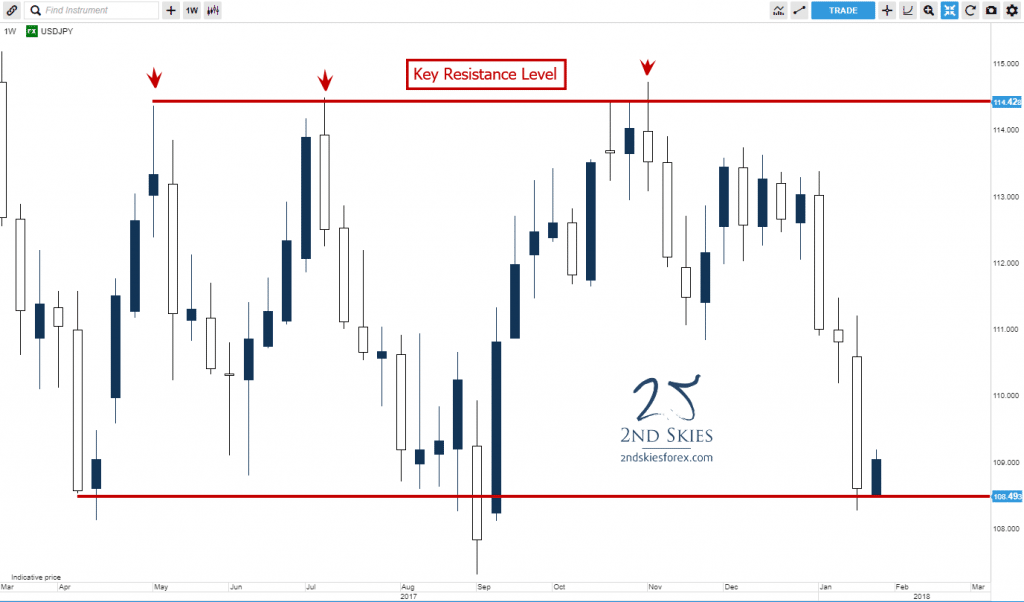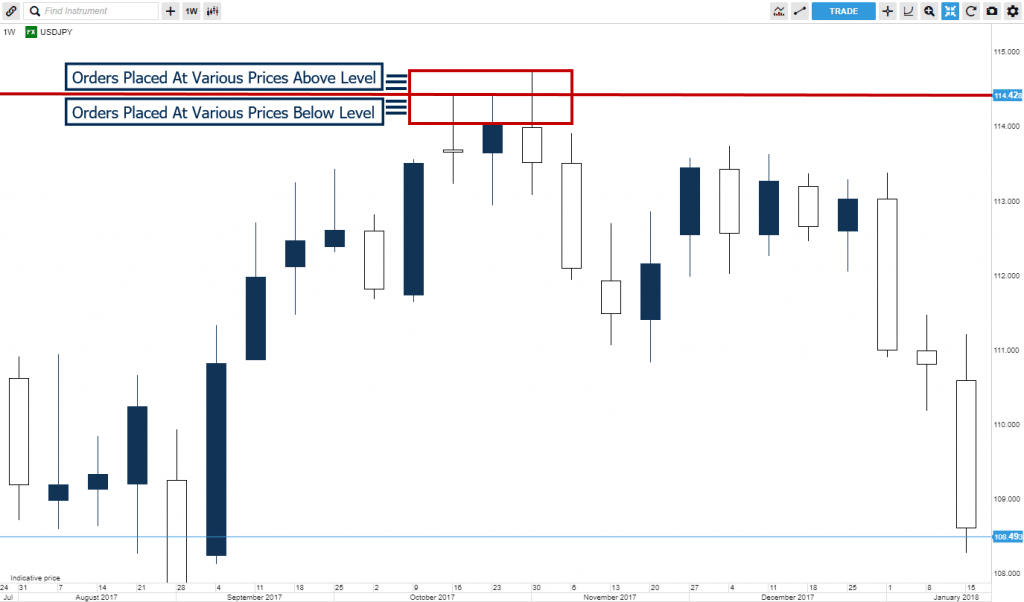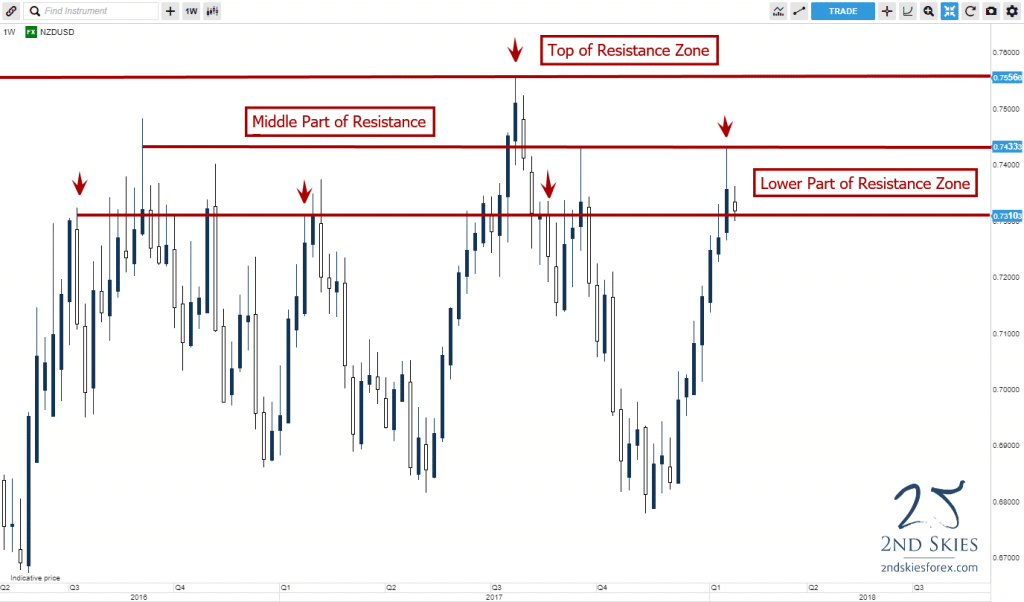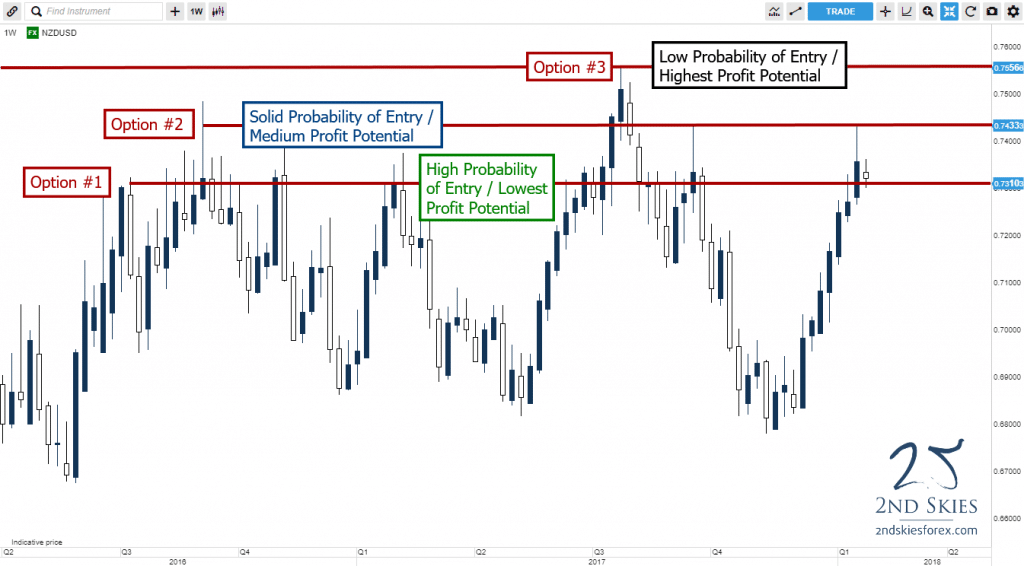Key S/r Forex
What'due south Within?
- How to find key support and resistance levels in any market
- How can I merchandise support and resistance zones, either using end of mean solar day price action or intraday strategies?
- Why is it hard to find good back up and resistance levels to trade?
If there is a bailiwick which repeats itself amongst traders who are struggling with price action, understanding and trading key support and resistance levels would exist near the peak of the listing.
Common questions struggling traders ask are:
- How exercise I know if a support or resistance level will hold?
- If I take a full time job, and am trading end of day (or daily/4hr time frames), how do I choose the best back up and resistance levels?
- How can I find the all-time support and resistance levels for trading?
Have you asked whatever (or all) of the above questions when learning trading online? Felt confused about understanding fundamental back up and resistance levels? If and then, then pay attention to this commodity as we're going to put many pieces of this puzzle together regarding cardinal support and resistance levels, along with how to trade them.

Fundamental Point #ane: How Professional person Traders Relate to Support and Resistance Levels
Anyone who has seen how professional traders trade know they often place their orders ahead of time and less often practice marketplace orders. A full general theme that shows upwardly is about lxx+% of all institutional orders are placed at prices ahead of time, while <xxx% are market orders.
Now every institution and trader has their ain approach. Some utilize price action, some use the ichimoku deject, some use fibonacci levels, some employ indicators, etc. Regardless, none of that matters.
What does affair is all of them are paying attention to fundamental support and resistance zones. These ' zones ' are where they most often place their orders. Now it'due south important to empathise that each trader and institution has their ain 'holding time', pregnant how long they like to concur their positions.
Traders who have shorter holding periods will frequently require a smaller stop. Hence they will desire to get as shut to the support/resistance level as possible to create the smallest stop available while maximizing their upside. Traders with longer holding times won't crave every bit much precision and will likely have a larger stop loss to avoid getting kicked out of minor swings to capture the underlying trend.
Now to give you lot a visual of how this works, lets wait at the chart below on the USDJPY weekly chart.

As you can come across from the chart higher up, I've drawn a line on summit nigh 114.42 which I denote as 'resistance'.
Now here is how professional traders volition attack this using the next chart beneath.

If a professional person trader is bearish on the USDJPY (or thinks it's in a range), they'll sell the pair at or nearly 114.42. However, as I stated above, they'll have unlike holding times and stop loss sizes. So what the lodge menses will look like is you lot'll meet various orders placed below the 114.42 level, while some will be above.
In this case, considering two of the 3 wicks (in the nautical chart higher up) which hit the resistance level stopped on a dime, yous can assume at that place were a off-white amount of orders just below the level. What yous'll too notice is the 3rd wick pierced through the 114.42 level, either due to a) bulls trying to button through resistance and run across if they tin can produce a breakout trade setup, or b) traders finding liquidity just in a higher place it.
If yous were able to somehow see the combined global lodge book for these iii candles, most likely you'd see something like beneath:
Sell 10m 114.00
(with various orders selling between here and 114.42)
Sell 10m 114.42
(with various orders selling between here and 114.72)
Sell 20m 114.72
(with just a few orders to a higher place, perhaps upwardly to 115).
While this is an overly simplified description of the order flow around this key resistance level, information technology serves an important indicate. Which is, it'south important to sympathise professional traders volition place their orders at or around key levels . The variance in how they place their orders above/beneath these levels creates a 'zone' of orders, which defend a level, and thus create 'resistance'.
If the sell orders are enough to hold any bullish pressure level, the pair will sell off. If non, a breakout will likely occur, or a complex corrective structure will course.
At present the primal take-home point here is: professional traders who are spotting the aforementioned level/price volition almost likely identify their orders at/above/or beneath said price. This is what creates the 'zone' effect, and so try to avoid thinking primal support and resistance levels as clear/perfect lines in the sand.
Key Point #2: The Larger The Back up or Resistance Zone, The Greater the Variance in Orders Behind That Zone
In the prior USDJPY chart, the resistance zone was pretty small-scale (near 30 pips from superlative to bottom). This makes it pretty like shooting fish in a barrel to get some precision when selling at a key resistance zone.
Only what happens when the support or resistance zone is much wider, say 100 pips or more than? How do I trade that? Great question which I'll answer below.
Meet the NZDUSD weekly chart, which currently has a wide resistance zone between .7312 and .7556, over 240 pips!

When you have such wide resistance zones, it means there is less 'agreement' in the order catamenia between the bears in the market.
At that place are bears which feel .7310 is a decent resistance (as evidenced past the fact simply 13 candles have airtight higher up this since late Q2 2016). There are bears which feel strongly nearly .7433 existence resistance as the pair has had only 2 weekly closes above this toll since Q2 2016. And so at that place are bears which felt the extreme values for this pair should not exceed .7556. This is clearly shown since the kiwi could not produce one weekly close in a higher place this cost.
So there is a lot of 'disagreement' specifically where resistance is, only there is agreement that this 'zone' is resistance. At present someday you lot come across a zone (wide or small), yous are faced with the same three trading choices when it comes to shorting it:
Back up & Resistance Zone Trading Option #i: If you want the highest probability of getting in the trade, you'll want to target the bottom of this resistance zone (flip this for support zones…eastward.g. top of the zone). By getting in a part of the resistance zone frequently touched, you're increasing the probability you'll become into the merchandise. The downside = a wider finish loss, which as well reduces your potential turn a profit.
Back up & Resistance Zone Trading Selection #2: If you desire a solid probability of getting in the merchandise, while non wanting such a huge stop loss, you'll want to make it somewhere within the zone (ideally closer to the middle). This will slightly decrease the probability your trade will activate, but will increase your profit potential since you'll take a smaller stop loss and thus greater target.
Support & Resistance Zone Trading Option #3: If you want the highest profit potential, and then you'll want to go far at the highest signal in the zone (.7433 or above). The upside here is yous can have the smallest cease loss possible, and thus the greatest profit potential. The downside is your trade is less probable to get activated (i.e. .7433 was only hit 4x since Q2 17′, while .7310 was hitting almost 25x).
To analyze, I have a chart below for you using the aforementioned Kiwi pair to demonstrate this.

So that is the 'framework' for how to think about back up and resistance zones and how you should trade them. You'll demand to make up one's mind how y'all want to trade that zone based upon probability and turn a profit potential. Neither pick is amend or worse per se stylistically. You'll have to find which of the three is most natural to you.
Fundamental Point #three: Trading Support and Resistance Zones Ways Trading 'Probabilities'
I think one of the biggest confusions most trading price action using back up and resistance levels is agreement probabilities , and relating to trading (or taking your trades) based on probabilities. This 'confusion' has been perpetuated by a common 'narrative' that you should expect for 'confirmation cost activity signals'.

Supposedly you practise this to 'ostend' the level will hold, and thus be more 'probable'. The fact of the matter is, most professional person traders have already decided what level and price they want to enter, well before any said pivot bar, fakey or 'confirmation price action signal' has formed.
The underlying gild menstruum is generally clear to most professionals before these 1-ii bar candlestick patterns take even formed, so they know which direction is more 'probable', forth with their merchandise location.
And considering nobody to engagement, later decades, has been able to establish with a verified live trading account, or with statistics that trading pin bars off key levels gives you a greater probability the merchandise will work out ( + turn a profit ), this narrative is quite dubious and making traders more dislocated about trading key support and resistance levels. Only I digress…
When you boil it down, there are two fundamental points to understand here:
#1: Either the level will hold or not
#2: The order catamenia (and probabilities) are most probable in place whether a key support or resistance level volition hold (or non)
"What the above means is you lot will never 'know' if the level will hold or not. You lot only have probabilities to work with. Hence you have to approach information technology 'probabilistically' (which negates looking for 'confirmation')"
The best mode to determine either of the above is by learning how to read cost activeness context and the club flow behind it. The context volition create a 'structure' which is reflective of the underlying gild flow. ane-two candlesticks likely isn't going to change that, nor are they more important than an entire structure. Hence, when you lot can learn to read toll action context and structures, you lot'll be able to see which level is more probable (and probable) to hold (or non).
By doing this, you'll be getting better merchandise locations than you lot would with any pin bar or confirmation price activeness signal. I demonstrate this clearly in my latest live trade video for +480 pips and +5R turn a profit. Endeavour to observe a better entry using a pivot bar (you won't).
Hence by learning to trade without confirmation price action signals, and to sympathise the context in terms of probabilities, yous'll avert missing perfectly adept trades.
And if you await at my USDJPY or NZDUSD charts, yous'll run into there were very few confirmation price action signals here, which = lost trades and profits.
USDJPY Weekly Chart

NZDUSD Weekly Chart

My guess is if yous were to identify many cardinal support and resistance levels over years and years of price action that produced great trading opportunities, you'll encounter many times there were trivial or no pin bars, or any kind of confirmation price activity signals, thus a lot of lost profits missing these loftier quality trades.
In Summary
And so I've covered a lot of basis here regarding key back up and resistance levels. The key points and methods I talked virtually above apply to any instrument, whatever fourth dimension frame, or environment.
It'southward important to note at that place is a lot more to understand when trading or finding key support and resistance levels. Such equally how 'clean' a level is, when a level is more probable to hold (or fail), what are the best levels to merchandise, how to detect cardinal levels using daily chart strategies, trading intraday, and more than.
This is a big subject that cannot be unpacked fully (or well) in a single commodity. And it'due south a skill yous'll need to build over time through practice, analysis and feedback from a professional person trader and mentor.
Now if you want to larn more near forex trading central back up and resistance levels, and amend your ability to discover the best ones to trade, then check out my online price activity class where we have over v hours of video lessons on this, along with quizzes, analysis and feedback from me and my senior students on how to detect and trade the best levels.
Now Your Plow
Did you discover this support and resistance level commodity useful and learn something new? If and then, and then make sure to leave your comments below, along with share/like/tweet information technology with others.
I'll expect forward to hearing from you.
Source: https://2ndskiesforex.com/trading-strategies/forex-traders-can-find-best-key-support-resistance-levels/
Posted by: mcguirehicee1973.blogspot.com


0 Response to "Key S/r Forex"
Post a Comment